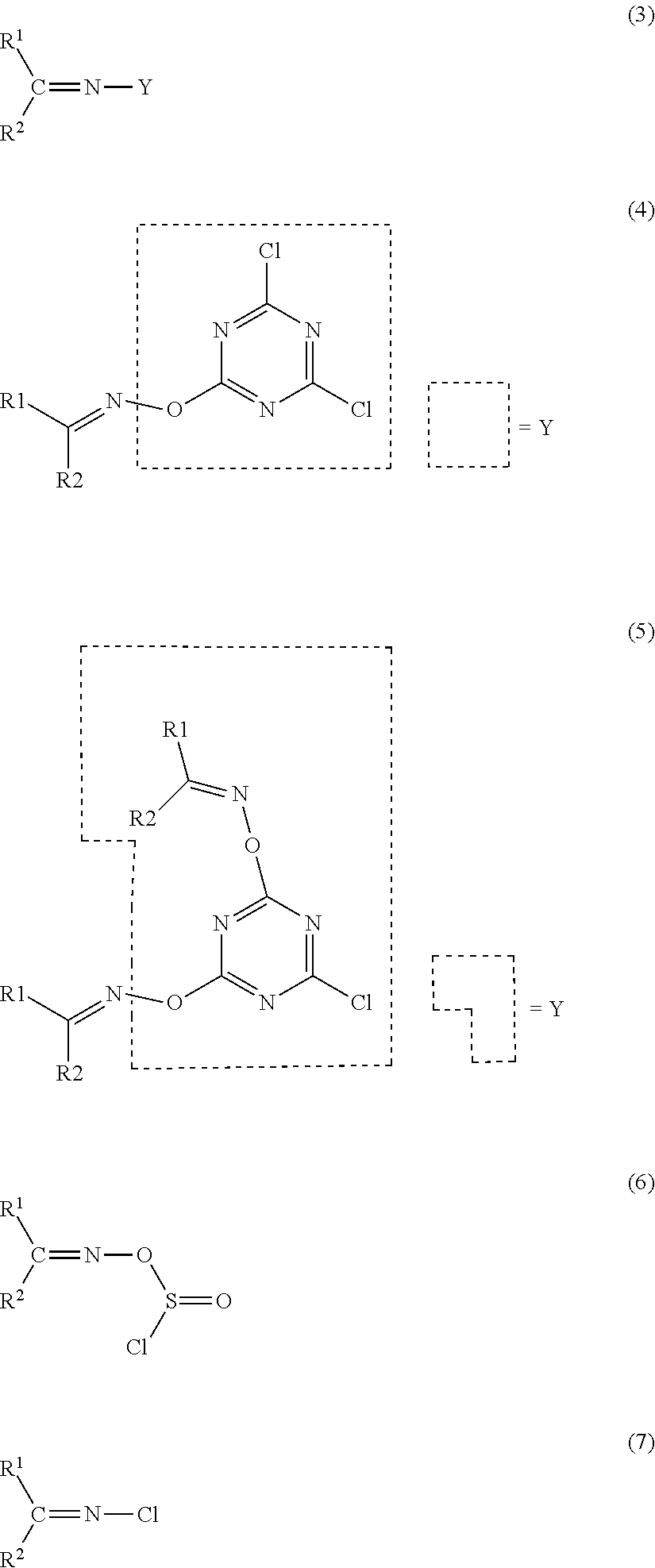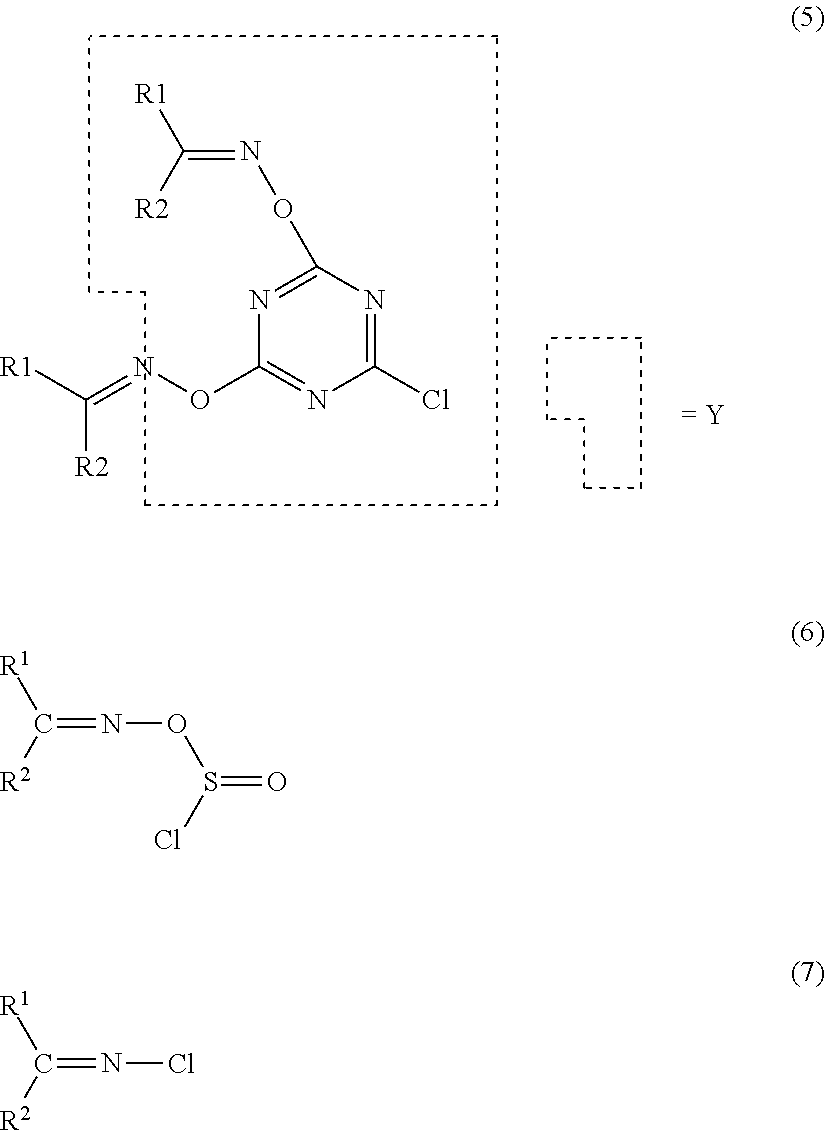Method for producing amide compound
- Summary
- Abstract
- Description
- Claims
- Application Information
AI Technical Summary
Benefits of technology
Problems solved by technology
Method used
Image
Examples
reference example 1
Production of Cyclododecanone Oxime
[0128]To a first pillow type oxime-forming reactor which has a liquid-phase volume of 30 L and inside of which was divided into four chambers each of which had an individual agitator, a 15% by weight aqueous solution of hyroxylamine sulfate (Wako Junyaku Inc.) at 1.5 kg / h and an oil phase supplied from a second oxime-forming reactor were fed A reaction temperature was set to 95° C., and a 25% by weight of aqueous ammonia solution was fed to each chamber at a rate of 32 g / h to initiate an oxime-forming reaction, to give an oil phase containing cyclododecanone oxime and toluene.
[0129]The aqueous phase was fed to the second oxime-forming reactor. The second oxime-forming reactor is a 15 L pillow type reactor inside of which was divided into four chambers. The aqueous phase of the oxime-forming reaction solution and a 25% by weight solution of cyclododecanone in toluene at a rate of 2 kg / h (equimolar to hydroxylamine sulfate fed to the first reactor) w...
reference example 2
Drying of Cyclododecanone Oxime
[0131]The cyclododecanone oxime solution obtained in Reference Example 1 was evaporated by an evaporator to dryness for further removing toluene. The resultant powdery cyclododecanone oxime was placed in a vacuum oven and dried at 120° C. under a reduced pressure of 150 Pa for 24 hours, to give 2.62 kg of anhydrous cyclododecanone oxime.
reference example 3
Preparation of a Cyclododecanone Oxime Solution
[0132]Zinc chloride (18.2 g) was added to 5.26 kg of the 50% by weight solution of cyclododecanone oxime / toluene obtained in Reference Example 1, and dissolved by heating to 90° C. (referred to as, “50% by weight cyclododecanone oxime / zinc chloride solution”). Separately, the 50% by weight cyclododecanone oxime / toluene solution obtained in Reference Example 1 was diluted with toluene to prepare a 20% by weight cyclododecanone oxime / toluene solution and a 3% by weight cyclododecanone oxime / toluene solution. Here, the 20% by weight cyclododecanone oxime / toluene solution must be heated to 50° C. for avoiding precipitation of cyclododecanone oxime, whereas precipitation was not observed in the 3% by weight cyclododecanone oxime / toluene solution even at room temperature.
[0133]Examples A1 to A10 and Comparative Examples A1 to A3 are provided for showing relationship between reaction conditions and a conversion of cyclododecanone oxime and a y...
PUM
 Login to View More
Login to View More Abstract
Description
Claims
Application Information
 Login to View More
Login to View More - R&D
- Intellectual Property
- Life Sciences
- Materials
- Tech Scout
- Unparalleled Data Quality
- Higher Quality Content
- 60% Fewer Hallucinations
Browse by: Latest US Patents, China's latest patents, Technical Efficacy Thesaurus, Application Domain, Technology Topic, Popular Technical Reports.
© 2025 PatSnap. All rights reserved.Legal|Privacy policy|Modern Slavery Act Transparency Statement|Sitemap|About US| Contact US: help@patsnap.com



